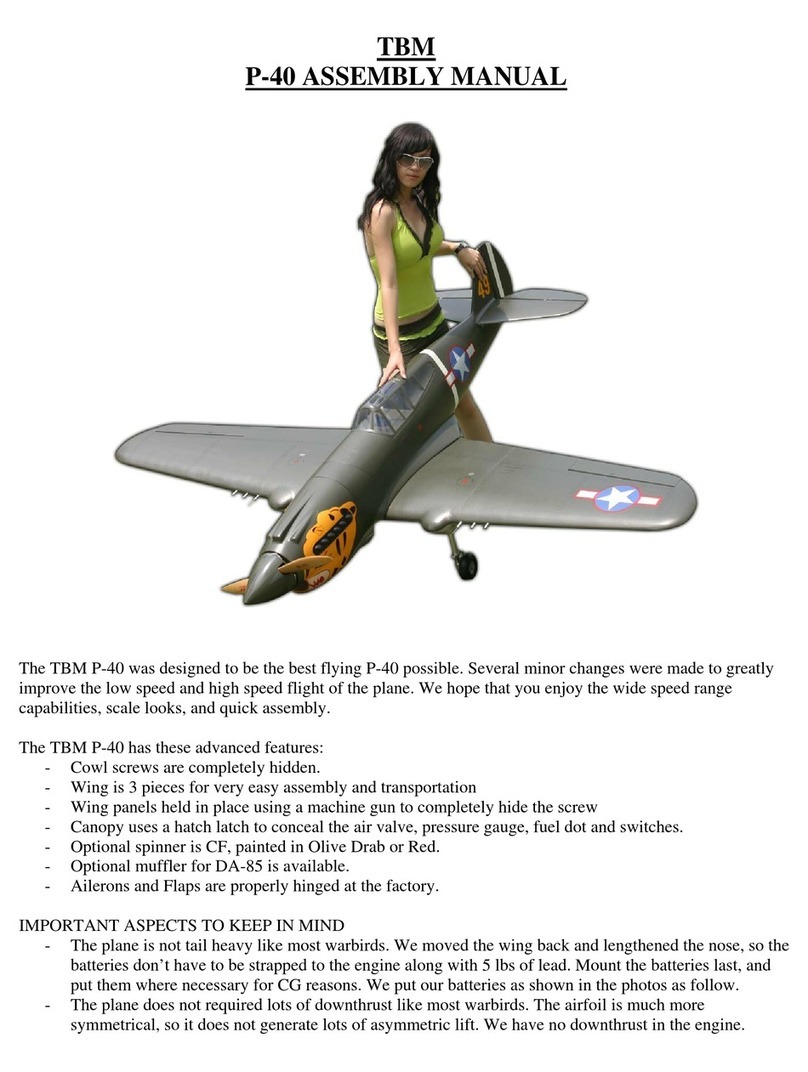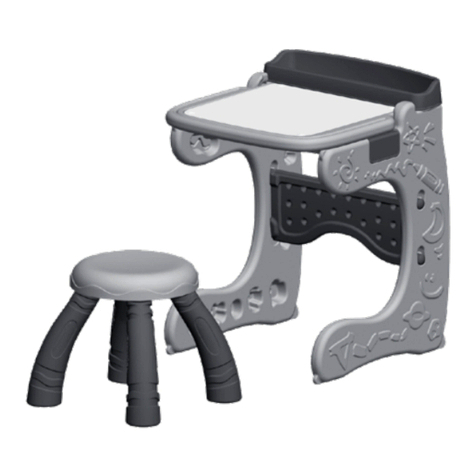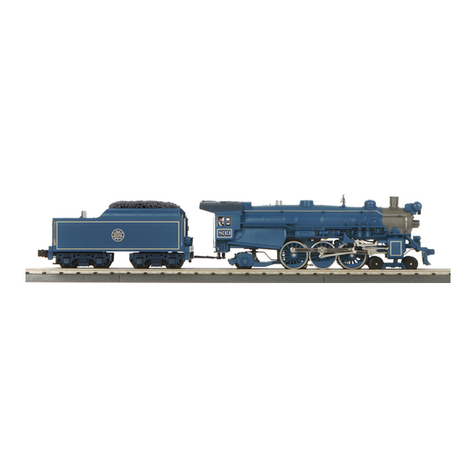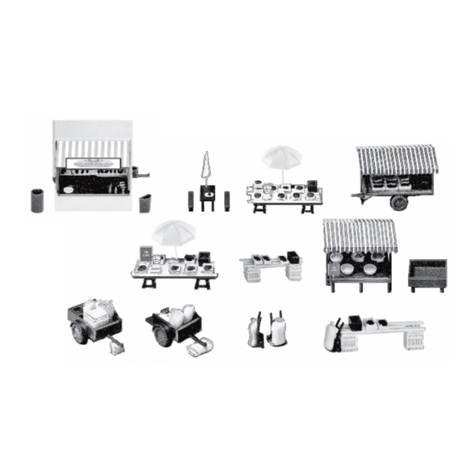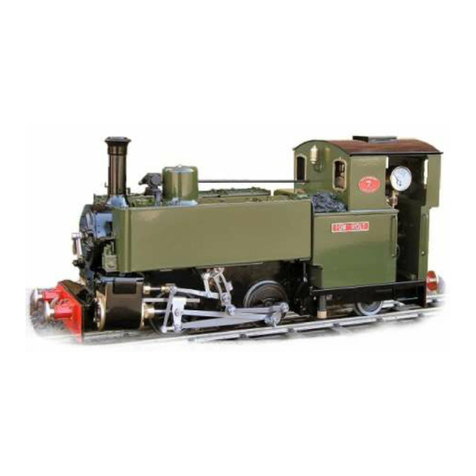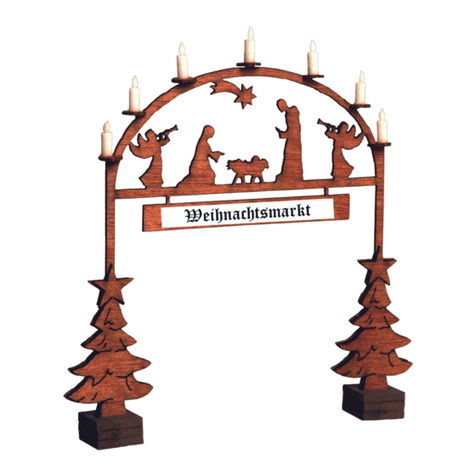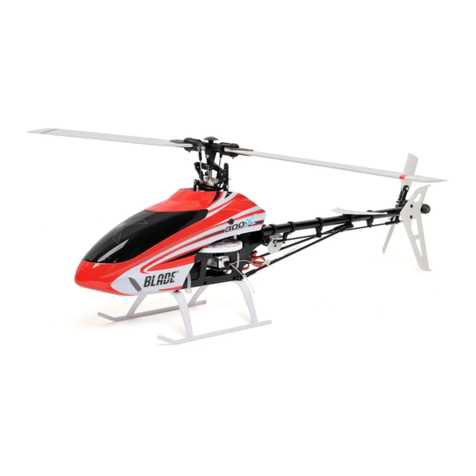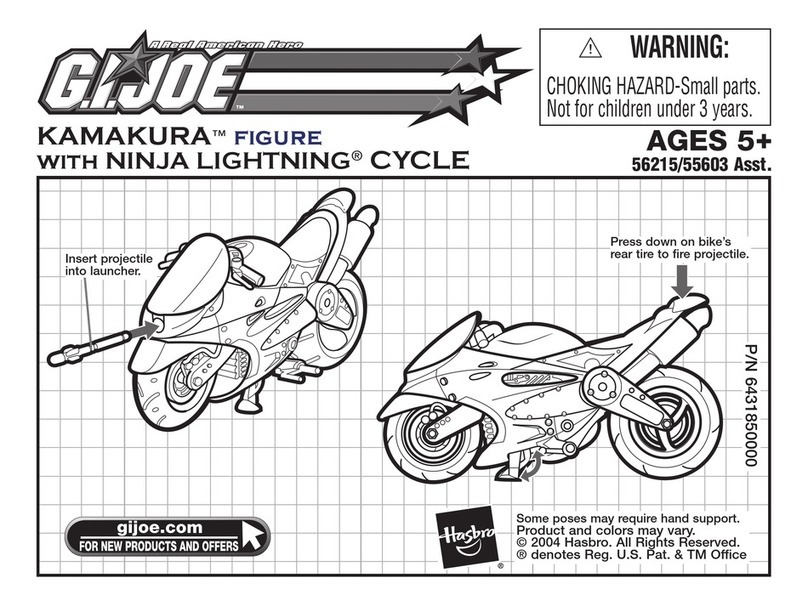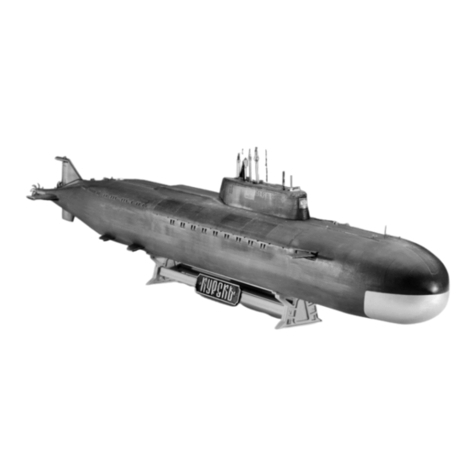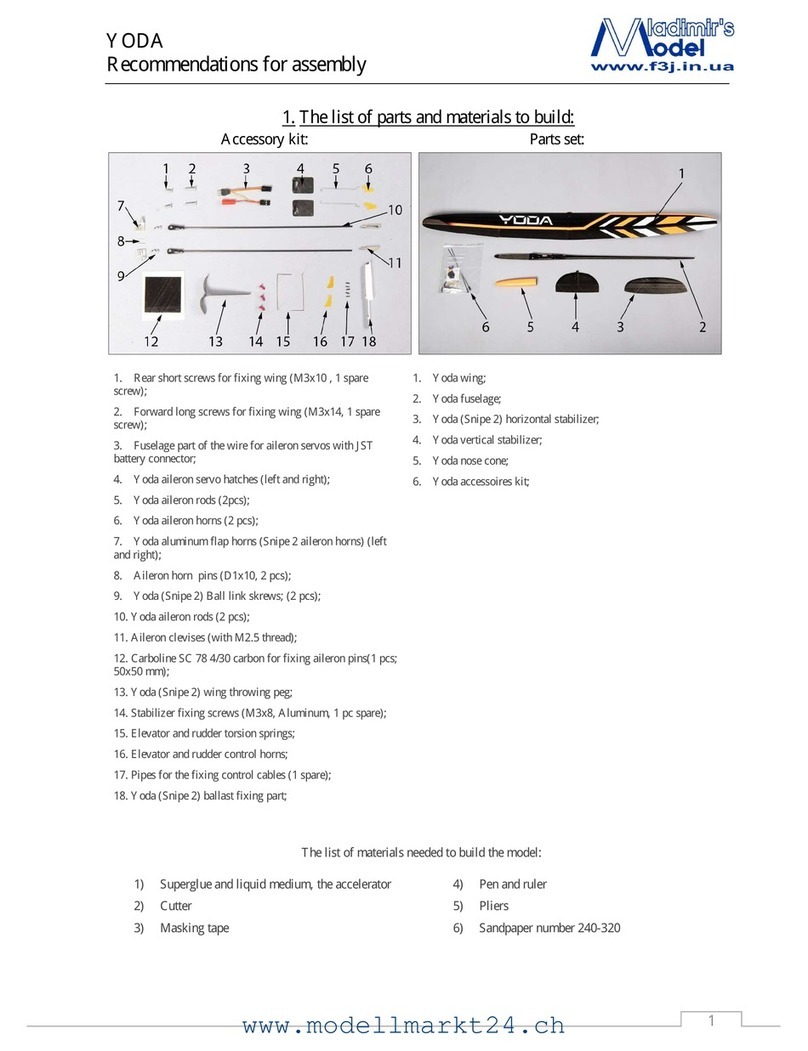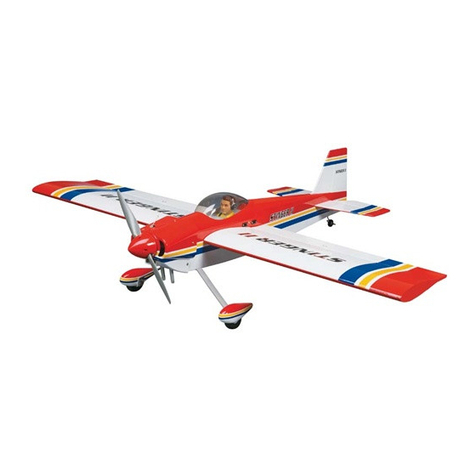TBM DV8R User manual

1
TBM DV8R MANUAL
Revised 1/4/2010
NOTE: This manual will be updated continually as new information is obtained.
The DV8R (pronounced deviator) was PCM Model’s follow up to the AV8R (aviator) sport trainer jet
but was a completely new model designed from the ground up to be a superior all around
performance jet, hence the name (Deviator). Rather than simply “blow up” its smaller cousin we
decided to create a model than has looks and performance usually found in far more expensive jets
but in a package that fits a wide range of modeler’s skills. With its large size, light wing loading and
generous landing gear stance, the DV8R has an incredible flight envelope that will prove favorable to
nearly any jet pilot. We are so impressed with DV8R’s flight prowess, its smoothness and its extreme
stability at all speeds that we think you’ll agree that it will be one of the best flying models you have
ever flown. TBM purchased the rights to the DV8R, and with minimal changes made it available as an
ARF.
Patrick McCurry
Troy Built Models purchased the right to the DV8R from Pat in 2008. Several changes were made to
improve the performance and ease of transportation. Incidences of the wing, stabs and turbine were
changed to accommodate turbines of very high output without any trim changes. The wing is 4 pieces
instead of 1 which allows the landing gear and all its components to remain connected if required.
The outer wing panels are split at the intersection of the ailerons and flaps. With the outer panels
removed, the plane is 44” wide, and can be easily rolled across the ground and into a truck on its
landing gear. Also the wing was moved back slightly to eliminate lead in the nose for CG reasons. We
changed the servos mounts so that they mount inside the surfaces rather than having the tops of the
servos exposed for a much cleaner look. The trailing link landing gear necessitated a wing change.
The trailing link gear is great for grass runways. The DV8R, as great as it was, is even better now that

2
it is an ARF. The DV8R is THE premier jet for grass runways. It combines high performance with low
wing loading for easy take offs from any surface, and easy landings. Being wood and covering rather
than fiberglass, if you do have a mishap, repairs are quick and easy.
Experience Level
Building the TBM DV8R requires only basic experience with typical ARF models and turbine
engines. Construction is very straightforward. It should take 20-30 hours to complete, most of which is
installing the servos, hinges and retracts. Flying the DV8R is simple enough that it can be used as a
turbine trainer. The wing is large with limited sweep for very stable slow flight characteristics,
however, if you put a very large turbine in the plane it will have outstanding performance, as good as
planes costing much more money.
Options
The DV8R as shipped to you is a traditional ARF. In addition to the kit there are items you will need
to obtain to finish your model. Options such as landing gear, brakes, fuel tanks, servo mounts and
more can be purchased directly from TBM. In many of the instructions and photos that follow some of
these items are mentioned or referred to during the construction process. Please feel free to contact
us for more information concerning these items.
What Is Needed To Start
As we mentioned earlier, it is expected that the builder of this model posses at least most of the
skills necessary to construct a model of this type. With these skills comes knowledge of modeling
tools that may be needed for a given procedure. For this reason we will not give a piece by piece
count of every tool used during the construction of this model, rather from time to time we will mention
the method and tools used to achieve a desired result on the factory prototypes. Our first model was
built using very basic modeling tools, on an average size banquet table.
IMPORTANT: Radio Selection – Channels and servo extension options
If you use a separate channel for each servo/function you need 12 channels: 2-ailerons, 2-flaps, 2-
elevators, 2-rudder, throttle, brakes, nosewheel steering, and retracts.
You can eliminate the need for some of the 12 channels if you use (up to) 5 Y-harnesses, though you
will need to program some of the servos to work properly because of end point adjustments and the
need to reverse servos. There are options for reversing servos such as a servo programmer (the
Hitec programmer only works with Hitec digital servos, not analog TBM part# HSprogrammer20),
reversing Y (TBM part# expyrev), a JR Matchbox (TBM part# JRmatchbox), or a Smart-Fly
powerexpander (various part numbers from TBM. Be sure to get one which has the programmer).
1) nosewheel steering, 2 rudders (use 2 Y-harnesses). If you use 2 channels for the
rudders, two 48” extensions are required. If you use a 12” Y-harness, two 36”
extensions are required. The Y-harness must plug into the receiver, not into the
rudders.
2) ailerons
3) flaps
4) elevators
About Adhesives
The prototypes were built using a variety of adhesives throughout the process. Predominantly
speaking, a good CA and Hysol are needed.

3
Engine selection - Please READ!
The original DV8R is still flying with a JetCat P80, which is a perfect match for this model. TBM built
its prototype ARF with a Jet Central 36 lb Rhino only to test out the DV8R’s maximum capabilities.
The Rhino is not recommended as it is too large. We recommend the Jet Cat 70, 80, or 120 or the Jet
Central Rabbit, Falcon or Super Eagle. The plane will weigh about 22 lbs, so a turbine with about 22
lbs of thrust is recommended.
NOTE that the power from the larger turbines make the plane fly very fast. The drooping nose at high
speeds causes the plane to descend slightly. This is easily correct by changing the thrust line of the
turbine a small amount to compensate. The plane is then rock solid at all speeds. We tested the
prototype with a 36 lb thrust Rhino, and it was very, very fast, yet rock solid after the turbine thrust
line was fine tuned.
Parts Lists (Included)
1) fuselage nose section
2) fuselage rear section
3) 2 rudders/vertical fins
4) 2 elevators/stabilizers
5) Canopy
6) Pull-pull hardware for the nosewheel steering.
7) Rudder linkage
8) Elevator linkage
9) Aileron linkage
10)Flap linkage
11) 10 small wood screws for mounting the elevator servo hatches
12) 8 swivel clevis and horns 8-32 for all control surfaces
13) 2- 2” titanium turnbuckles for ailerons
14) 2- 1.5” titanium turnbuckles for flaps
15) 2- 1.5” titanium turnbuckles for rudders
16) Pin hinges
Suggested Parts List (Not Included)

4
1) Retractable landing gear with valve, air tank, air lines, servo, etc. The bottom of the wing is
ready to accept the landing offered by TBM. This gear is of trailing link design for shock
absorbing. This design is great for grass runways, or for cushioning a hard landing.
2) Brakes, brake valve, servo, air lines, air tank, etc.
a. For the brakes and retracts we suggest that you purchase 3 different colored air lines to
keep things organized. We suggest 1/8” or 3mm line. Either of these lines work well with
Festo 3mm fittings.
b. Purchase 6 of the Festo 3mm bulkhead fittings. These go through the bulkhead in front
of the wing. The holes are there already. This then gives you quick disconnects for all 6
lines when you remove the center section of the wing from the fuselage.
3) Wheels
4) radio system. If you use a separate channel for each servo/function you need 12 channels: 2-
ailerons, 2-flaps, 2-elevators, 2-rudder, throttle, brakes, nosewheel steering, retracts. You can
use up to 5 Y-harnesses to reduce the number of channels though you will need to program
the servos to work properly because of end point adjustments and all but the ailerons must
have one of the two servos reversed.
a. nosewheel steering, 2 rudders (use 2 Y-harnesses)
b. ailerons
c. flaps
d. elevators
5) 9 analog 150 oz metal gear servos for flaps, ailerons, nosewheel steering, rudders and
elevators, or better. Digital servos are best if you fly at high speed. High torque and high
precision are more important than high speed.
6) 8 metal servo arms ½”-1” long. Use the shortest arm/hole possible to offer the best mechanical
advantage. SWB have 4 holes drilled and tapped for 4-40 screws, so they are the easiest to
use. The photo shows the SWB 1” arm using the inner hole.

5
Photo of SWB 1” servo arm using the innermost hole.
7) 12’ of “one wrap” Velcro (TBM part # TBMVelcro)
8) Overflow fitting (TBM part# TBMoverflowfitting)
9) Air trap/Bubbleless Fuel Tank (TBM part # TBMBFT)
10)Hysol or Epoxy
11) Two 48” servo extensions for the elevators
12)Two 36” servo extensions and a Y-harness or two 48” servo extensions for the rudders
13)Two 24” servo extensions for the ailerons
14)Two 12” servo extensions for the flaps
15) Several servo plug clips which prevent plugs coming apart (TBM part# MPIclip or PPMJP)
16) Servo mounting screws
QUICK BUILD INSTRUCTIONS (for those in a hurry)
1) Join fuselage halves
2) Install fuel tanks
3) Install all servos control horns and control surfaces
4) Install landing gear
5) Install turbine

6
6) Install batteries and radio
7) Fuel up with kerosene and go fly
BUILD INSTRUCTIONS
NOTE – Most planes of any type are tail heavy. Temporarily mount the batteries in the nose. They
can be easily moved rearward if necessary.
NOTE 2 – Some builders recommend building the plane as much as possible before joining the 2
halves so that it lie flat on the table.
Join the fuselage halves (Can be done now or after some assembly has been completed)
1) Brush on a thin layer of epoxy or Hysol onto the mating parts. Keep in mind that any excess
glue that you have on the nose section can squeeze out onto the outside of the fuselage, so
keep the glue to a minimum.

7
2) Push the two halves together and clamp in place.
3) Do not install the fuel tank as shown in the photo below. This is the smoke tank mounted in
front of the fuel tank(s). The fuel tanks are behind this tank on the CG.
Fuel Tank Installation
Below is a photo of the installation of 2 DuBro 50 oz fuel tanks. TBM now offers a 101 oz fuel tank
suitable for use in the DV8R. If you install the TBM 101 oz tank some of the former needs to be
relieved for installation on the CG. Aftermarket Kevlar tanks are also available. The two 50 oz tanks
mount of their sides as shown.
1) If installing the two 50 oz tanks, cut 4 pieces of Velcro 18” in length.
2) Use hot melt glue to attach the Velcro to the top and sides (not the bottom) of the fuel tanks.
Have the end pieces of Velcro hang down to wrap around the fuselage floor. This makes
installation and removal very easy.
3) The tank(s) are mounted near the CG. The front of the tank(s) is at the front of the former as
shown in one of the following photos.

8
4) Install overflow fitting. It goes off to the right in the photo below, through the fuselage. The
overflow/startup tank then can rest on the wing.
5) Plumb tanks as shown. There is plenty of room to add a smoke tank in front of these tanks if
desired.
6) Attach the TBM BFT (bubble-less fuel tank or equivalent) to the BFT mount and glue in place
with Hysol where shown.

9
TBM BFT has Velcro hot glued to the tank. A band of one-wrap Velcro hold it in place. After
the assembly is completed, glue in place as a unit. See next photo for placement.

10
Photos show placement of batteries, steering servo, retract, ECU, air gauge, receiver, brake and
retract servos and valves, on/off switch, BFT, fuel valve, etc. Note that the air tank is located under
the false floor on the opposite side of the BFT.

11
Photo of another pilot’s layout of equipment inside the fuselage.
NOSEWHEEL AND STEERING INSTALLATION
Install nosewheel steering servo as shown.
Install the nosewheel retract. Install the nosewheel steering.
The nose gear steering is activated via pull-pull set up. Locate the materials to make up the control
lines and proceed as follows.
NOTE: When setting up your steering, first screw the four 2-56 eyelet screws into the 2-56 clevises
about a 1/16th of an inch only. Connect the clevises to the servo arm and steering arm at the top of
the strut. Holding the strut and servo straight, use the supplied steering cable and make up the two
pull-pull lines.
TIP: Remember that these lines will stretch a little when first used and you will need to read adjust the
connections. This is why you do not want to screw the clevises all the way onto the eyelet screws
when first setting up this control run. Also keep in mind that when the model is rolling the nose gear
strut will be pressed backwards against its stop, tightening these lines somewhat. When the model is
at rest, there will be a little play or “slop” in the lines so adjust accordingly. You can install the servo
either before or after sheeting the bottom of the fuselage. If you run out of available threads for
adjustment, you may tie a knot in the Kevlar thus shortening it to allow for fine-tuning. Use thin CA on
all knots to ensure they will not come loose.

12
HINGING ALL CONTROL SURFACES – The prototype used CA hinges. While the proved
adequate, we upgraded to flat pin hinges for production. Pin hinges have less resistance than CA
hinges, and last longer. The Chinese do not do a good job of cutting slots for flat hinges, so the slots
are not cut in place. Cut the slots so that there is minimal gap, yet enough deflection.
IMPORTANT – the flaps are hinged at the bottom, not the center. They should hang almost straight
down for landing and about ½ way for takeoff.
WING ASSEMBLY
There are several ways to make the wing. The wing is in 4 sections. The intent is to leave the wing in
4 pieces so that at any time you can elect to either remove the tips only, and leave the plane on its
gear for easier transport, or have the wing break into 2 sections and use standard wing bags for long

13
term storage. If you prefer to glue to the two center sections together to provide increased structural
integrity, you are welcome to do so.
NOTE: Be sure to glue the joiners into the wing tips. You don’t want anything sticking out of the
center section of the wing with the tips removed. This makes the plane as narrow as possible so that
it fits more easily into a vehicle with the center section of the wing attached. Also, it won’t go together
the other way. If you prefer, you can glue all 4 sections together to make a 1 piece wing. This is how
the original was designed.
1) Install servos as shown. Use 24” servo extensions on ailerons, use 12” servo extensions on
flaps. Use a wire like a coat hanger to pull the servo extensions through the wing. The
extensions come through the top of the wing. There are holes in the sheeting for this already!
2) If you use Y harnesses, be sure that the servos are moving the way you need them to. You will
need the aileron servo arms pointed away from one another and the flap servo arms pointed
the same way. See photo. There are hard points in the control surfaces. You must find them
and use them.

14

15
From the photos, you can see how the wing tips are held onto the center section. There are 2 spars,
one made of CF in the front and one made of aluminum in the rear.
1) Test that the rod (machine gun) goes completely through the 2 spars.
2) Find the hole in the front of the wing, and open it with a hot object
3) Insert the rod into the hole and test that it threads into the threaded insert in the back of the
wing. Don’t install the spars yet.
4) Slide the spars in as shown. The holes in them go towards the bottom of the wing. Push the
machine gun through them, and screw in place. These spars should be locked in place very
well. The machine gun won’t unscrew during flight and fall out since there is no vibration.
5) Test fit the wing tip onto the spars.
6) Glue the spars to the wing tip only. Once the glue is set, remove the machine gun, and the tips
should come off as long as you were careful not to get glue onto the wing ribs. Clean the spars
with alcohol first. Then apply a small amount of Hysol into the slots in the wing tips. You don’t
want glue to ooze out of the slot and glue the wings together. There is not a tremendous
amount of force trying to pull the wing tips off, but enough glue must be present to hold the
spars in place.

16
3) Install included hardware. Use 2” titanium linkages for ailerons, 1.5” for flaps, ball links, and
swivel clevis and horns.

17
Elevator, Rudder and Aileron Servo Installation
1) All the servos for the control surfaces are similar. Install the servos using the mounting blocks
(provided) as shown. Glue the mounting blocks to the hatches after you trim them to the
correct size. We provide 4 wood blocks 1” x ¾” x ¼” for this purpose. BE SURE to drill holes
for the servo screws to avoid splitting the wood. We don’t use the rubber servo mounts or
grommets. Jets have little vibration, so we just screw the servo directly to the wood.

18
2) Use 48” servo extensions with safety clips. (Or use 36” extensions and a Y-harness though
one servo must be reversed electronically as discussed above in radio section)

19

20
3) Install the control horns by opening the holes in the covering, drilling to the appropriate size,
soaking with thin ca, and assembling.
4) Install spars into the elevators as shown using Hysol
5) Remove covering and glue wood to wood to permanently glue elevators in place.
NOTE: Always put a drop of Loctite or glue onto the nuts of the swivel clevis and the nuts on the 8-32
horns to keep them in place. Tap the swivel clevis for 8-32 to facilitate assembly.
Rudder Installation
1) Install the rudder servos in the servo bays provided. NOTE that the rudder servos on the
production models are located in the fins, not in the fuselage as shown below!
2) Use 48” servo extensions with safety clips. (Or use 36” extensions and a Y-harness. No servo
needs to be reversed electronically, both operate normally)
3) Install the control horns by opening the holes in the covering, drilling to the appropriate size,
soaking with thin ca, and assembling.
4) Install spars into the rudders as shown and glue permanently to the fuselage using Hysol. The
heat tape has been left off of the fuselage to help you run the wiring.
Table of contents
Other TBM Toy manuals
Popular Toy manuals by other brands

Enabling Devices
Enabling Devices Smooth Moves Sloth user guide

Eduard
Eduard Ju 88C-6b Night Fighter exterior quick start guide
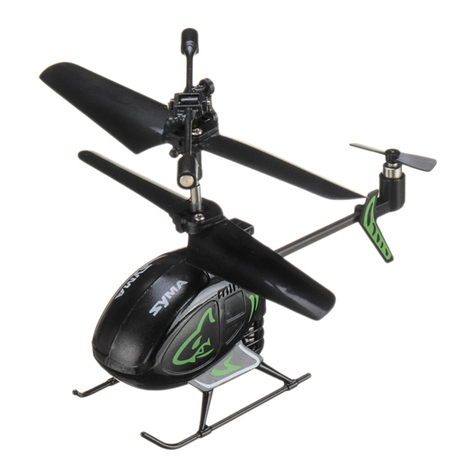
SYMA
SYMA S100 Instructions for use

Innovative Hobby Supply
Innovative Hobby Supply Clock Tower BK 6425 General assembly instructions
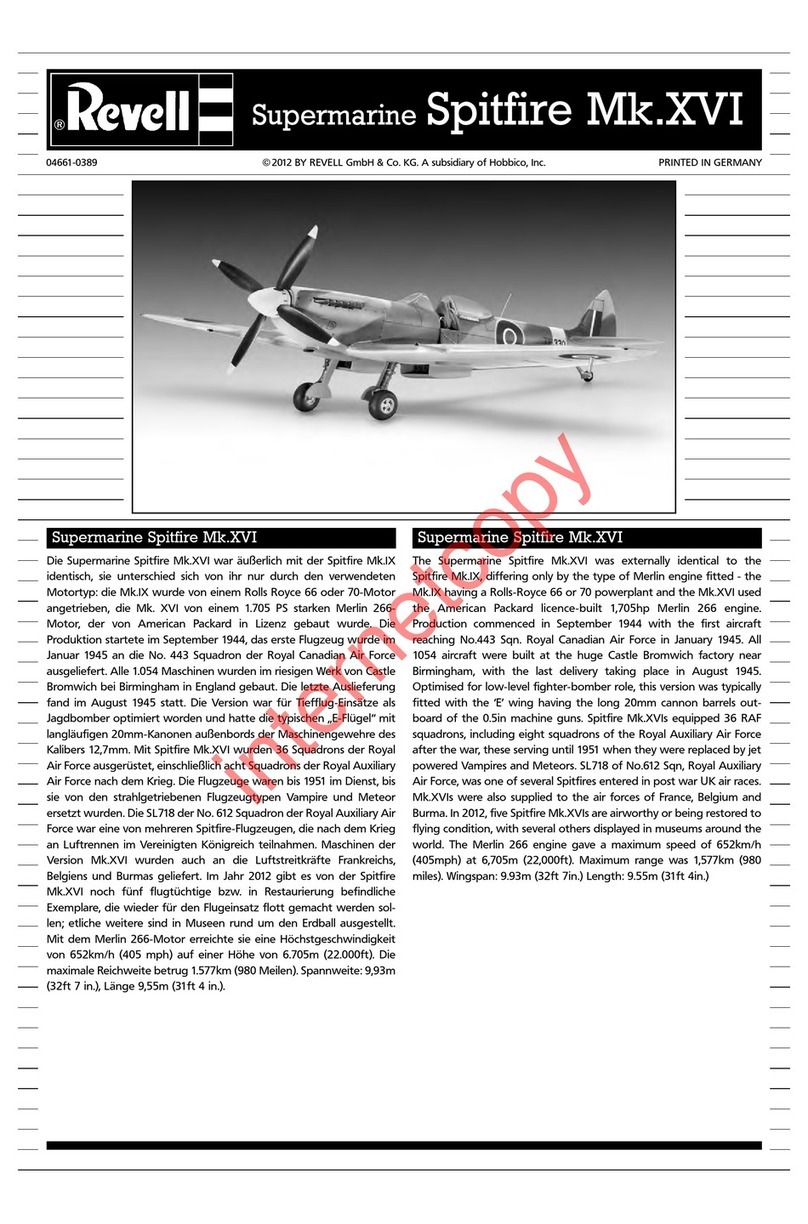
REVELL
REVELL Supermarine Spitfire Mk.XVI Assembly manual

Lionel
Lionel Metro-North Railroad 25th Anniversary M-7 Commuter Train... owner's manual
